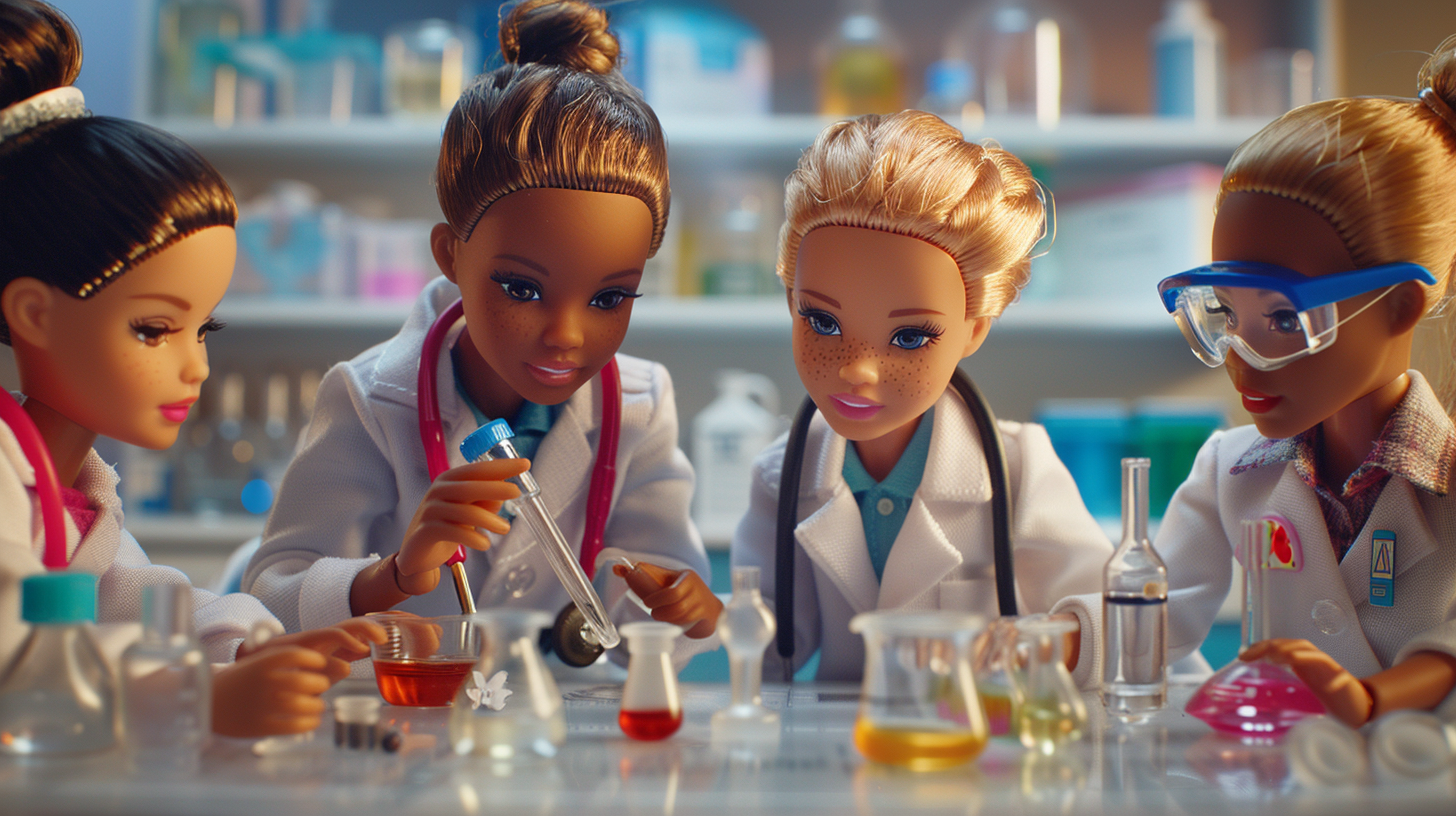Barbie dolls have long been iconic symbols of various careers, but their representations of medical and science professions fall short of accuracy and diversity. According to research conducted by Katherine Klamer, an analysis of Barbie medical and science dolls revealed significant gaps in professional portrayal and adherence to safety standards.
Klamer’s study analyzed 92 Barbie brand dolls and 65 comparison dolls, focusing on their careers, demographics, and professional attire. “We found that Barbie brand medical professional dolls largely treated children,” she explains. Among 80 medical professional Barbie dolls, 66% were shown working with child patients, and only 4% were depicted working with adults. In contrast, the comparison dolls offered a broader range of professions and ethnicities.
The dolls were visually inspected for their adherence to clinical and laboratory safety guidelines, such as wearing appropriate personal protective equipment (PPE). “None of the scientist Barbie dolls met all PPE requirements,” Klamer points out. Hair and clothing choices posed safety risks, with only 29% of the female medical and scientist dolls having fully covered legs. Additionally, many of these dolls wore high heels, which further detracts from the realistic portrayal of medical professionals.
Beyond attire and equipment, the study also sheds light on the limited scope of professional fields represented by the dolls. Most doctor dolls were depicted as pediatricians, with minimal representation of other medical subspecialties. Klamer remarks, “If Barbie is to inspire future generations of medical and scientific professionals, toy companies must expand the range of specialties and ensure greater representation in terms of gender and ethnic diversity.”
Interestingly, Klamer also highlights the comparison dolls as a more diverse group. “The comparison dolls included more scientific fields, with scientists, engineers, and even MRI technicians being represented,” she notes. These dolls also offered better representation of ethnic diversity, including Black, Hispanic, and Asian dolls. However, similar to Barbie, many comparison dolls also failed to meet proper safety standards.
Klamer’s research points to the broader implications of toy representation for young children. Dolls not only serve as playthings but also as cultural symbols that shape how children perceive different professions. The study calls for manufacturers to rethink how they design medical and science dolls to better align with real-world diversity and safety standards.
While Barbie has made strides in promoting positive female role models, the study argues that much more can be done to break stereotypes and create dolls that reflect the true diversity of medical and scientific careers. “Barbie can be a powerful tool for inspiring the next generation, but only if she embodies the values of accuracy, diversity, and professional representation,” Klamer concludes.
The study suggests that future doll lines should not only represent a wider range of medical and scientific fields but also address the need for accurate safety gear and attire. By doing so, toys can become an educational tool that encourages young girls to aspire to careers in fields traditionally dominated by men, such as surgery and engineering.
Ultimately, this study shines a light on the importance of accurately portraying medical and scientific professions in children’s toys. For Barbie to continue inspiring girls to “shatter glass ceilings,” her representation in the medical and science fields must evolve, ensuring that the next generation can see themselves in a wider variety of careers.
Citation:
Klamer K. Analysis of Barbie medical and science career dolls: descriptive quantitative study. BMJ. 2023;383. doi:10.1136/bmj-2023-077276.
License:
This content is generated from the original article original article and it’s under Creative Commons Attribution Non Commercial (CC BY-NC 4.0) license, which permits others to distribute, remix, adapt, build upon this work non-commercially, and license their derivative works on different terms, provided the original work is properly cited and the use is non-commercial.




